Labels for Safety, Visuals and Facility ID Desktop Printers
Labels for Product, Wire and Lab ID Benchtop Printers
Labels for Safety, Visuals and Facility ID Desktop Printers
Labels for Product, Wire and Lab ID Benchtop Printers
Safety and Facility ID Desktop Printers
Product, Wire and Lab ID Benchtop Printers
Barcode Scanners and RFID Readers
PaintStripe Floor Marking Stencils
Valve Lockouts & Hose Lockouts
Group Lock Boxes & Permit Control
Brady Safety Lockout Tagout Services
Pipe Marker Accessories & Mounting Brackets
Maintenance and Production Tags
Calculators and Assessment Tools
Product Finders and Data Sheets
The Globally Harmonized System (GHS) of Classification and Labeling of Chemicals was developed to standardize the management of hazardous materials across different countries.
The Occupational Safety and Health Administration (OSHA) has adopted the GHS and integrated its standards into its workplace safety requirements. If you or your employees work with hazardous chemicals, you’ll have to meet certain labeling requirements and make use of Safety Data Sheets (SDS).
In addition, you’ll need to be familiar with the language around the hazardous materials in your workplace to ensure OSHA compliance. The GHS uses only two signal words to denote the level of risk associated with chemicals: “warning” and “danger.” Though these words are commonly used in everyday life, they have specific meanings when it comes to GHS.
In this context, “warning” refers to lesser chemical hazards. The chemical is harmful and must be handled properly, but it’s unlikely to cause severe or extreme damage to anything or anyone. All chemicals with a “warning” label posted on it must also be followed by a hazard statement, which describes the potential hazards of the chemical in greater detail.
Per guidance from the United Nations Economic Commission for Europe (UNECE), there are only certain situations in which you should use the “warning” signal word. Common instances include:
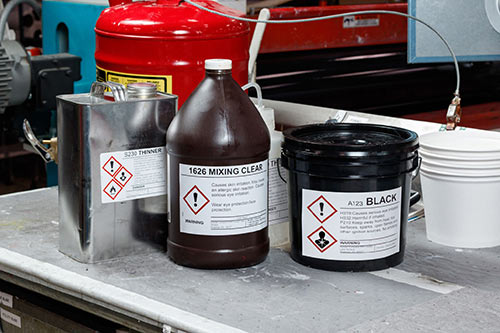
These are all hazards that can be harmful to human health — they just aren’t as severe as others. Although they are less harmful, keep in mind that these hazards should still be taken seriously to ensure safety in the workplace.
While “warning” is used to describe moderate hazards, “danger” refers to the most serious chemical hazards. If it’s mishandled or used inappropriately, the chemical may cause severe harm or damage to someone’s health.
Just like the “warning” label, the “danger” label must be accompanied by a hazard statement that discloses all of the hazards associated with the chemical.
Similarly, the UNECE details specific situations when you need to include “danger” on the chemical label, including:
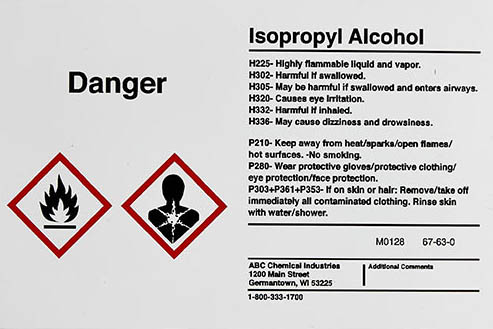
All of these hazards have greater potential for serious, even fatal, harm. They are significantly more risky than the hazards that warrant the “warning” label. Encourage everyone in your workplace to take the utmost caution around any of these chemicals by using the proper signage.
When it comes to chemicals that present more than one hazard, it can be difficult to properly label them. Even if it has more than one hazard associated with it, you can only use one signal word per chemical.
Always use the signal word that corresponds to the chemical’s most serious hazard. Not only is this an important part of making OSHA- and GHS-compliant labels, but it’s also vital for worker safety. Employees need to know the most serious hazards so they can take the necessary safety precautions when working with that chemical.
If the hazards are moderate, use the “warning” label to describe all of them. If they’re all severe, use “danger.” If a chemical has both moderate and severe hazards, use “danger,” as that word matches the most serious hazard associated with the chemical.
Always disclose more information about each hazard in the hazard statement. Further, give your employees thorough training and reference materials about chemical labeling so they’re informed about current GHS best practices.
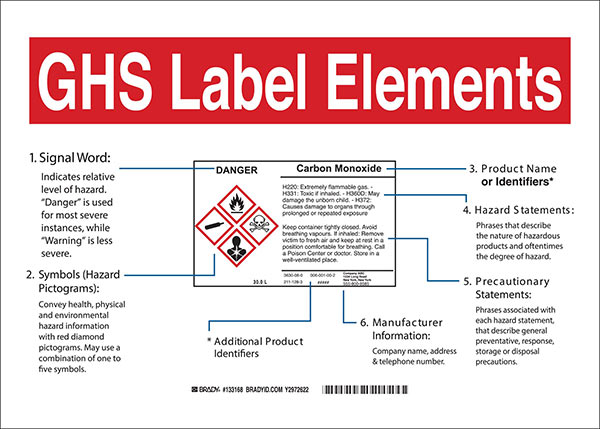
On a GHS-compliant label, you can find a signal word near the top of the label — right below the name of the product or chemical but above the hazard and precautionary statements. The corresponding pictogram appears to the right of the signal word.
The signal word should be large, bold and distinct from nearby lettering so it’s easy to read. This clearly and effectively communicates the chemical’s hazards and level of risk to everyone who comes across it.
Not all labels need signal words, though. In certain instances, a GHS pictogram may sufficiently describe the hazards of a chemical. It should still have all the other elements of a GHS-compliant label, including the hazard and precautionary statements. It’s best to have multiple kinds of labels and a GHS Label Printer as part of your safety tool kit to account for the variety of labels you may need in your workplace.
Ultimately, the entire GHS is a significant step forward for workplace hazard communication. After all, even two small signal words like “warning” and “danger” go a long way in keeping your workplace safe.
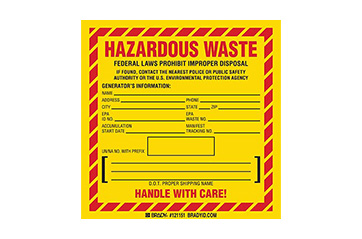
Understand the hazardous waste label requirements to comply with EPA/RCRA regulations.
Learn More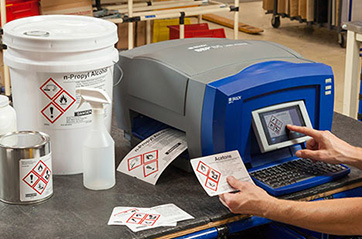
As workplace hazard communication evolves, you need to keep up to date to ensure safety.
Learn More